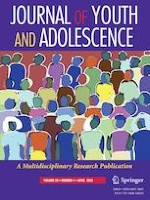17-10-2023 | Empirical Research
Individual and Community level Developmental Adversities: Associations with Marijuana and Alcohol Use in Late-Adolescents and Young Adults
Gepubliceerd in: Journal of Youth and Adolescence | Uitgave 4/2024
Log in om toegang te krijgenAbstract
Exposure to community and individual level stressors during adolescence has been reported to be associated with increased substance use. However, it remains unclear what the relative contribution of different community- and individual-level factors play when alcohol and marijuana use become more prevalent during late adolescence. The present study uses a large longitudinal sample of adolescents (Wave 1: N = 2017; 55% Female; 54.5% White, 22.3% Black, 8% Hispanic, 15% other) to evaluate the association and potential interactions between community- and individual-level factors and substance use from adolescence to young adulthood (Wave 1 to Wave 3 Age Mean [SD]: 16.7 [1.1], 18.3 [1.2], 19.3 [1.2]). Across three waves of data, multilevel modeling (MLM) is used to evaluate the association between community affluence and disadvantage, individual household socioeconomic status (SES, measured as parental level of education and self-reported public assistance) and self-reported childhood maltreatment with self-reported 12-month alcohol and 12-month marijuana use occasions. Sample-selection weights and attrition-adjusted weights are accounted for in the models to evaluate the robustness of the estimated effects. Across the MLMs, there is a significant positive association between community affluence and parental education with self-reported alcohol use but not self-reported marijuana use. In post hoc analyses, higher neighborhood affluence in older adolescents is associated with higher alcohol use and lower use in younger adolescents; the opposite association is found for neighborhood disadvantage. Consistent with past literature, there is a significant positive association between self-reported childhood maltreatment and self-reported 12-month alcohol and 12-month marijuana use. Results are largely consistent across weighted and unweighted analyses, however, in weighted analyses there is a significant negative association between community disadvantage and self-reported 12-month alcohol use. This study demonstrates a nuanced relationship between community- and individual-level factors and substance use during the transitional window of adolescence which should be considered when contextualizing and interpreting normative substance use during adolescence.
